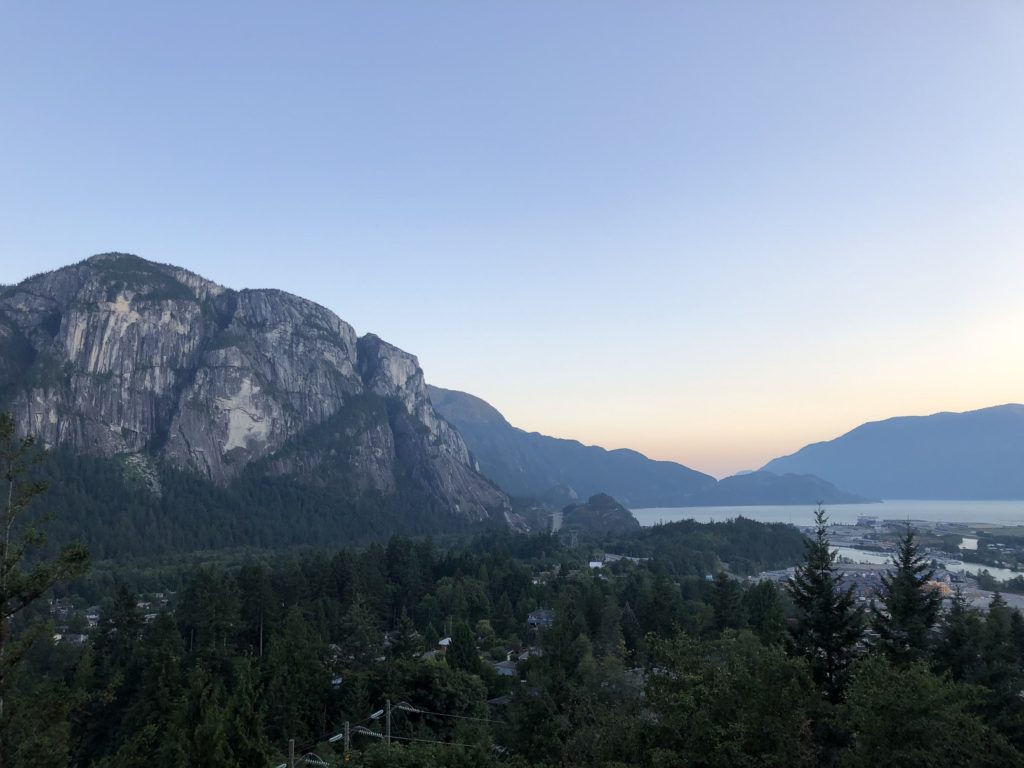
The focus of my last training cycle and this summer was alpine climbing. In addition to improving my fitness, part of progressing in the alpine was to improve my trad climbing. So, after doing some preliminary research, I decided to give the grade (or route) pyramid a try.
My First Grade Pyramid
I believe Eric Horst first introduced the concept of the grade pyramid in his book “How to Climb 5.12”. Lauren Abernathy does an excellent job of explaining it in this post. She climbs at a much higher level, but I liked the approach and decided to apply it in my climbing this year.
Since moving to Vancouver, I mainly climbed trad but never had any goal as such. Over the last few years, I had done some climbs from the Top 100 Squamish Climbs list, some multi-pitch climbs on The Chief and random cragging days. I always led single-pitch climbs and was comfortable at the grade, but felt kind of stuck.
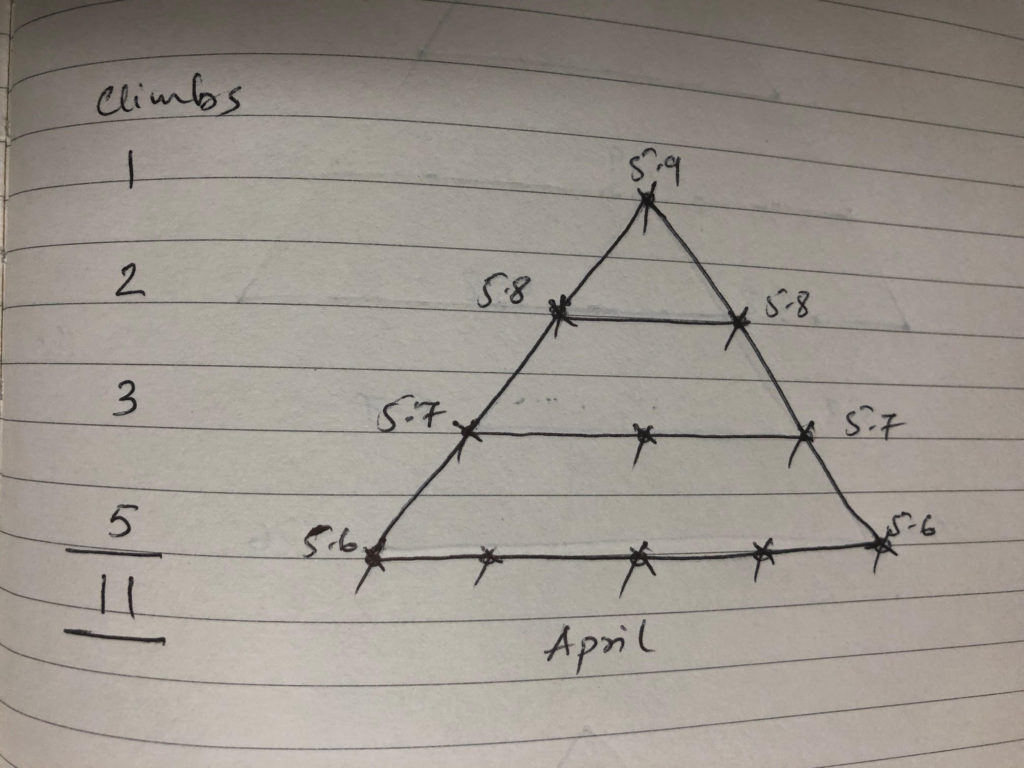
I started the season in April with my first grade pyramid. There were 11 climbs in total, with 5.6 at the bottom of the pyramid and 5.9 at the top.
My first climb with Bala and Oudi this season was at the Parking Lot Wall in Smoke Bluffs. For me, it was a good start to the season with short (10-15 m) and easy (5.6-5.8) climbs. I ticked eight climbs off my 5.9-grade pyramid on the first day. We recorded our climbs and asked each other for feedback. For me, it was “make small moves” was the key feedback.
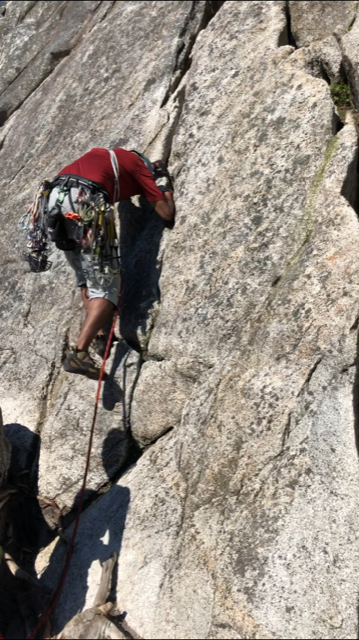
I was back the next week after work, and with Bala, I climbed at Neat and Cool. By the end of the session, I had completed my first pyramid and was on to my next one.
Funarama
For my second pyramid, I kept the base at 5.6 grade. Thus, I would have five levels with a 7-5-4-3-1 structure and 20 climbs in total.
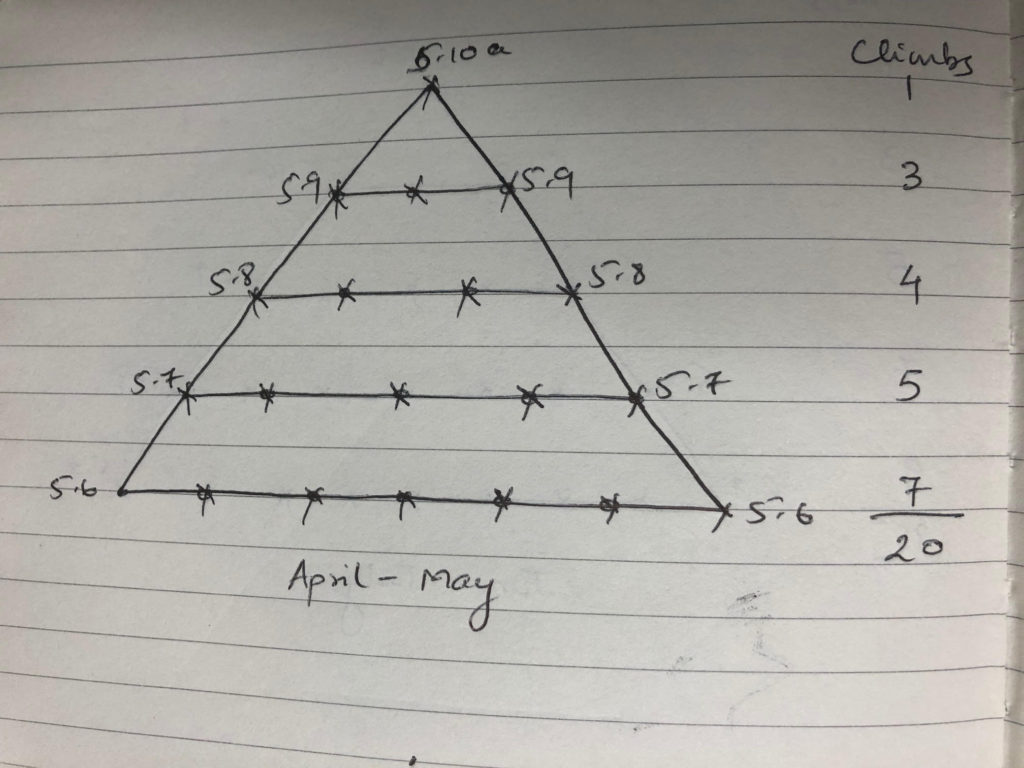
One of my best days of climbing in terms of volume was at Burgers and Fries with Lily. We had a relatively late start but we still climbed about 11 routes in the 5.7-5.9 range. Short pitches and great concentration of climbs helped us get some good volume.
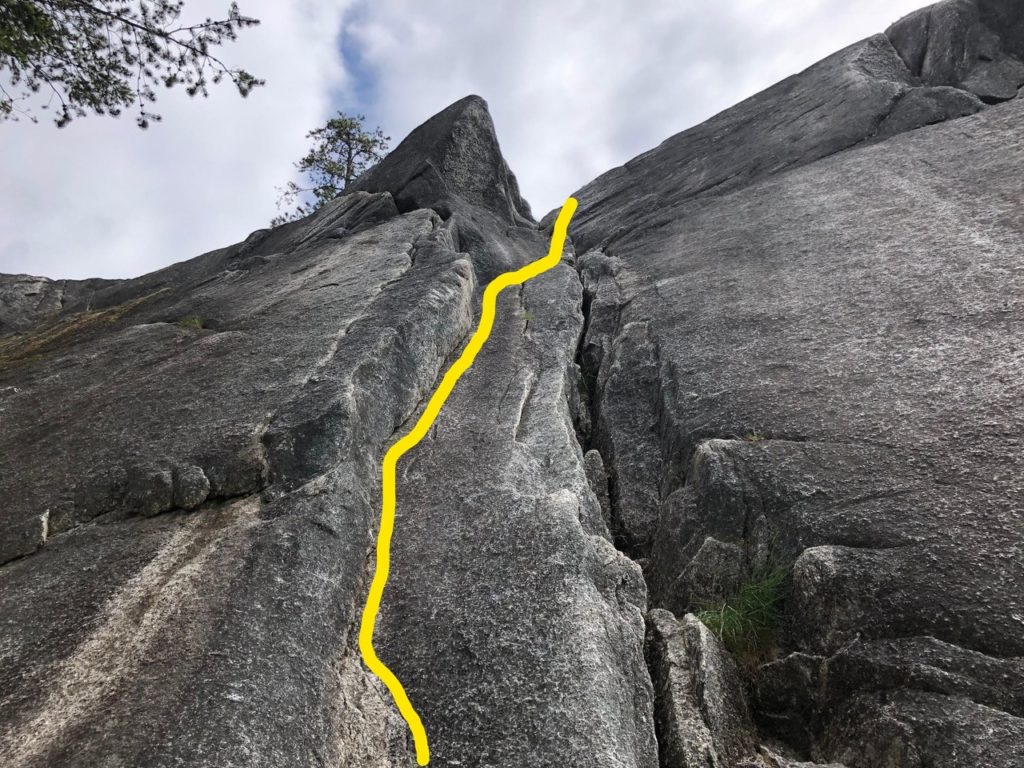
In May, I also climbed at Funarama with Bala and Lily. After doing some shorter climbs, we got on Point Blank and Funarama – two excellent 5.9s.
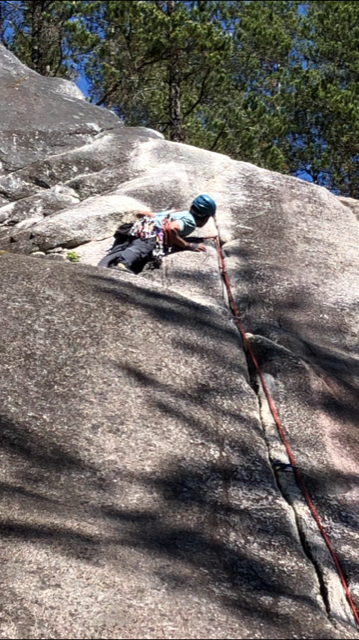
The end was a bit tricky. I first ventured left but soon realized that it was not the right way. Bala who had climbed it before confirmed the same. I climbed, downclimbed, hung on a piece and finally figured out the move. Given the runout, I think it was probably more mental than the technical aspect of the last move that made me balk. I didn’t onsight / flash the route like all the climbs so far, but it was probably the best route I did in May. Two more days of climbing and I had completed my 5.10a pyramid.
I was getting better at figuring out the gear I would need by looking at the climb and then picking the right Black Diamond cam for a crack. Occasionally I would climb with totems and it would take a couple of tries before I found the right piece.
Coronary Bypass
By end of May, I had done more climbs than last year. It felt good and I was making some progress. For the next cycle, I started with 9x 5.7 climbs at the base and 5.10b at the top.

Around the end of June, I climbed Southwest Ridge (5.9, 7 pitches) route on North Nesakwatch Spire with Oudi, Bala and Lily. It was my first Alpine Rock route of the season. Two months of single-pitch trad climbing prior to this climb helped with the technique as well as the mental game. Now I had the energy to focus more on learning route finding, alpine anchors, hazard evaluation, etc.
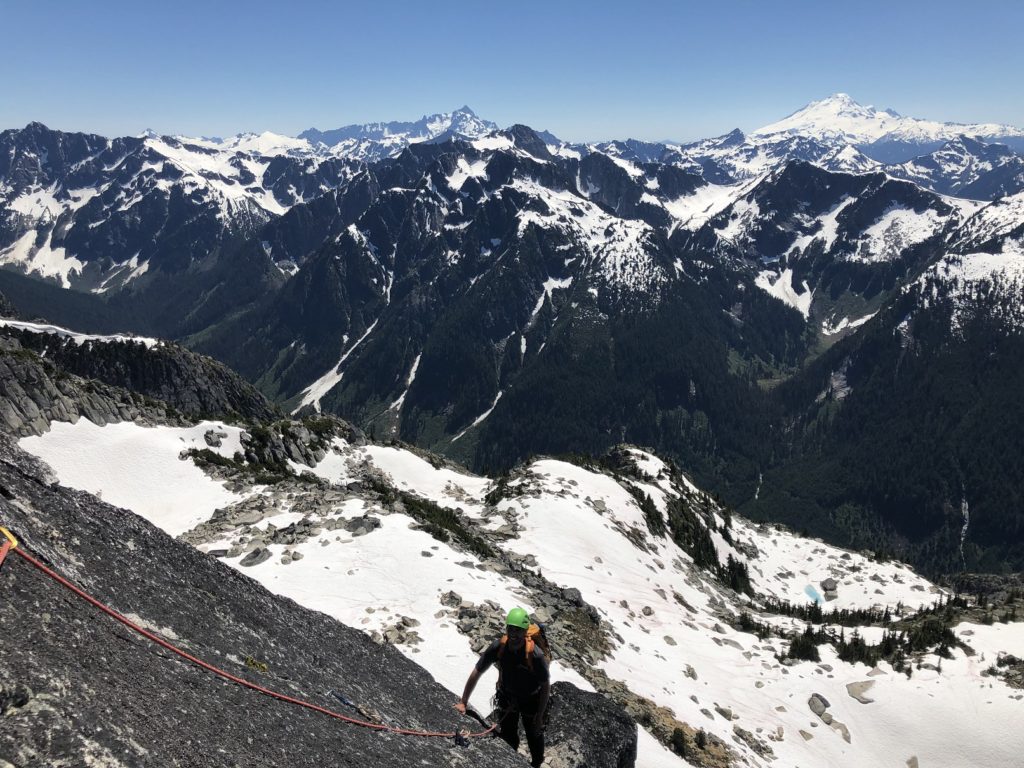
One of the weekends in July, Bala and I climbed at Octopus Garden. Will Stanhope and Sonnie Trotter were there with a group teaching a course on crack climbing. It was fun and inspiring to watch Will and Sonnie do some of the climbs.
We had a late start and after doing some of the 5.7-5.9 climbs, we decided to wrap up. On our hike out we decided to stop by Respiration Rock and check out the Coronary Bypass (5.10a) route. The route goes up the crack (in the middle of the photo below) and up the roof.
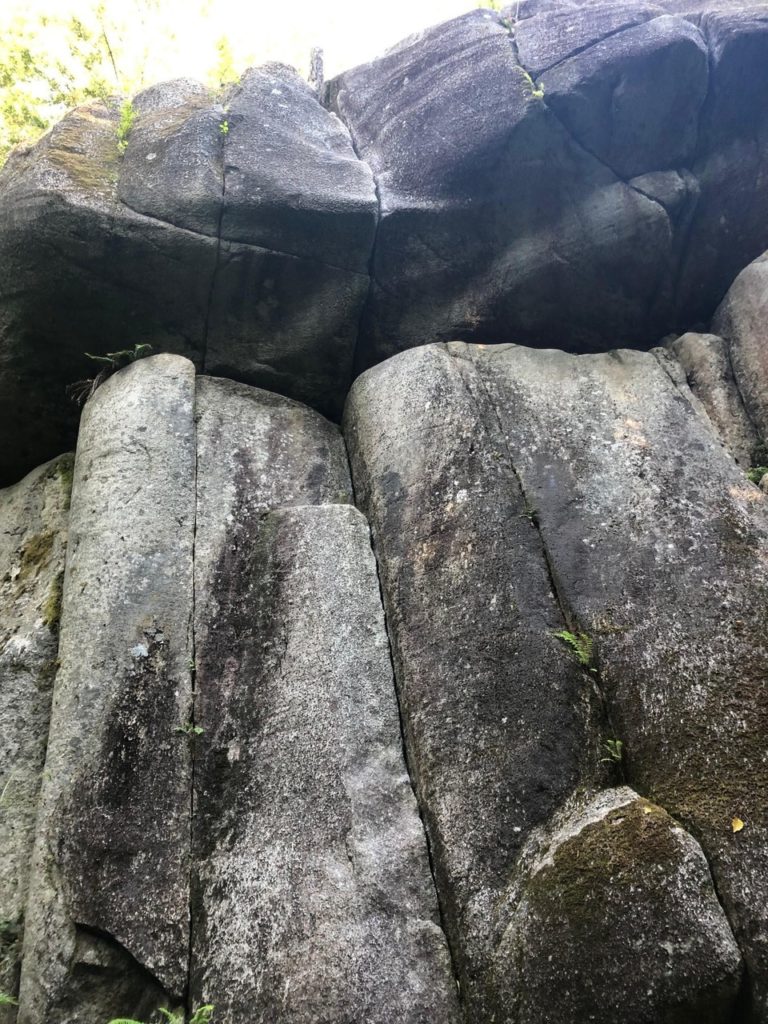
I knew that I shouldn’t try the hardest route at the end of the day, but felt a weird urge to climb it. As Cliff, one of my climbing friends from Nashville, TN used to say, “What’s the worst that could happen?”
Just below the roof, I put three pieces in – two in the horizontal crack and one on the roof. Knowing that I was secured, I was mentally prepared for the crux move. I had my right hand in the crack above the roof and it felt solid. After a few grunts, I got myself on the face above and finished the route. This one felt like a solid 5.10a.
Free & Easy
First week of July, I climbed West Buttress (5.9, 7 pitches) of Mount Matier with Lily. It was an excellent climb with a combination of long approach, glacier travel and multi-pitch climb. Route finding was challenging and I was mentally exhausted by the time we got to the base of the 5.9 pitch. But I was also relieved to know that we were finally back on the route. Relative to Nesakwatch Spires, the quality of the climb was not great but I was able to place some decent protection and get up this pitch.
In second half of July, I did two after work trips to the Free and Easy crag at Smoke Bluffs. On my first trip, I warmed up on two 5.8s and then did two 5.10bs – Pocket Change, Free and Easy
Pocket Change had just one tricky move and was not that hard. Having done the Coronary Bypass route, gave me the confidence to try Free and Easy route.
On my second trip to Free and Easy crag, I climbed two more 5.10bs – Shimmering Crack and Man About the Park.
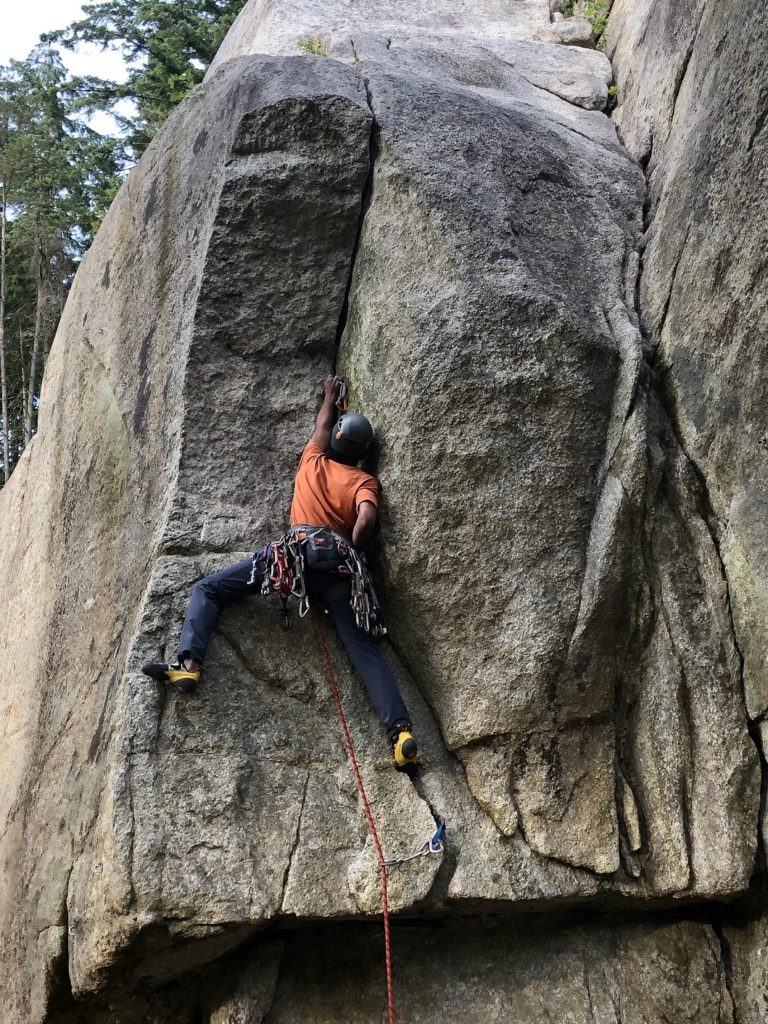
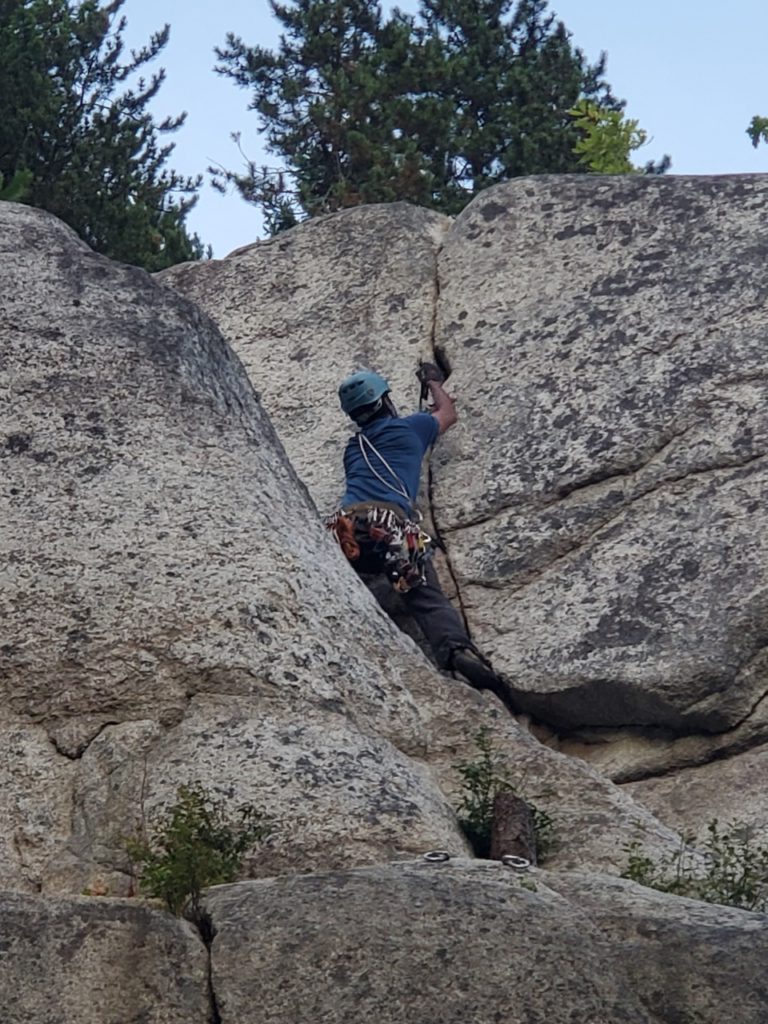
Photo by Philip
Rohan went up first on Shimmering Crack and it definitely helped seeing him do the crux moves. Bala and I led it next, and we both climbed it with our own slight variation. It was a fun climb.
I wrapped up the day with Man About The Park, a 5.10b right next to Shimmering Crack. The crux was the final finger crack climb to the top. I had recently watched the finger crack technique video by Wide Boyz and it helped me get up this section.
Getting Ambitious
By now, I had done more than fifty trad climbs and except for two, all of them have been an onsight or flash. I felt I was being conservative, so I set 5.10d as the top grade for my next pyramid.

I started August, with Escape Velocity (5.9, 7 pitches) on Mount Habrich. It was the easiest alpine climb I did this season, given the ease of access, established rap stations and frequent bolts guiding us up the climb. Bala led the hardest 5.9 pitch, Oudi and I followed him up this pitch.
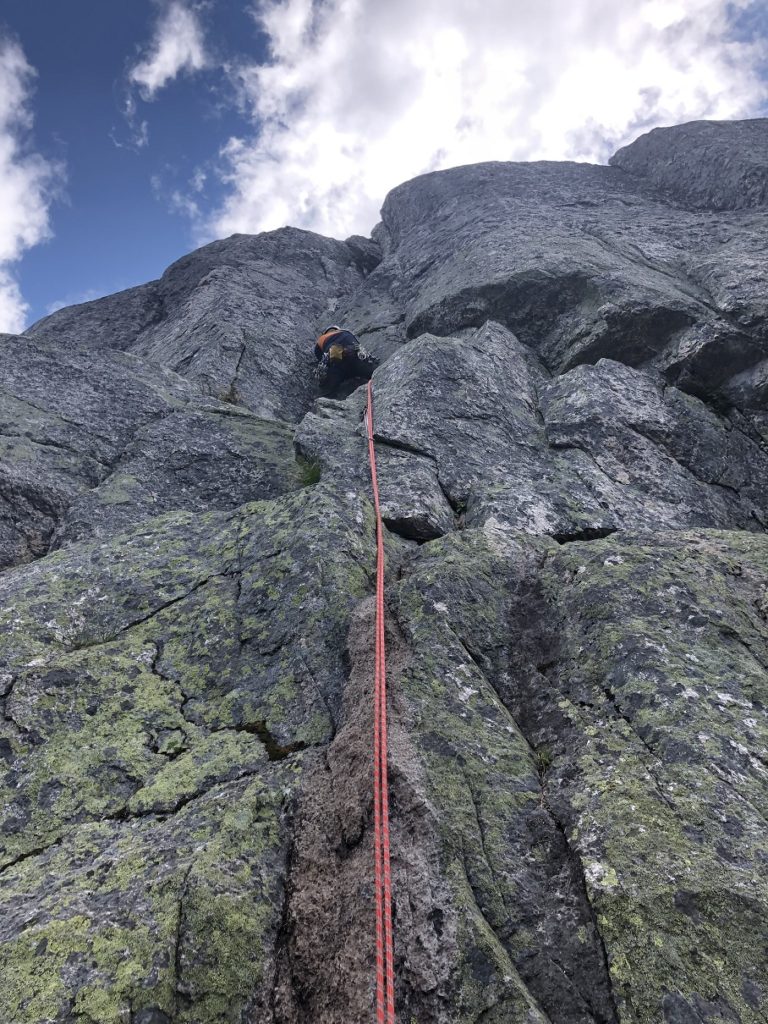
The 5.9 pitch was pretty good and I was a bit overconfident as I made my way up the climb. Soon I found myself struggling and I was second guessing each move. I slowed down and took my time to see all the features on the route. Eventually I got up, but had learned an important lesson – never underestimate any climb.
One of the most interesting route I climbed in August was Ridge Runner (5.9) at Ronin’s Corner in Smoke Bluffs. Its a mixed climb and is quite runout. Of all the climbs I have done this season, on this climb I was consciously breathing and careful with each move.
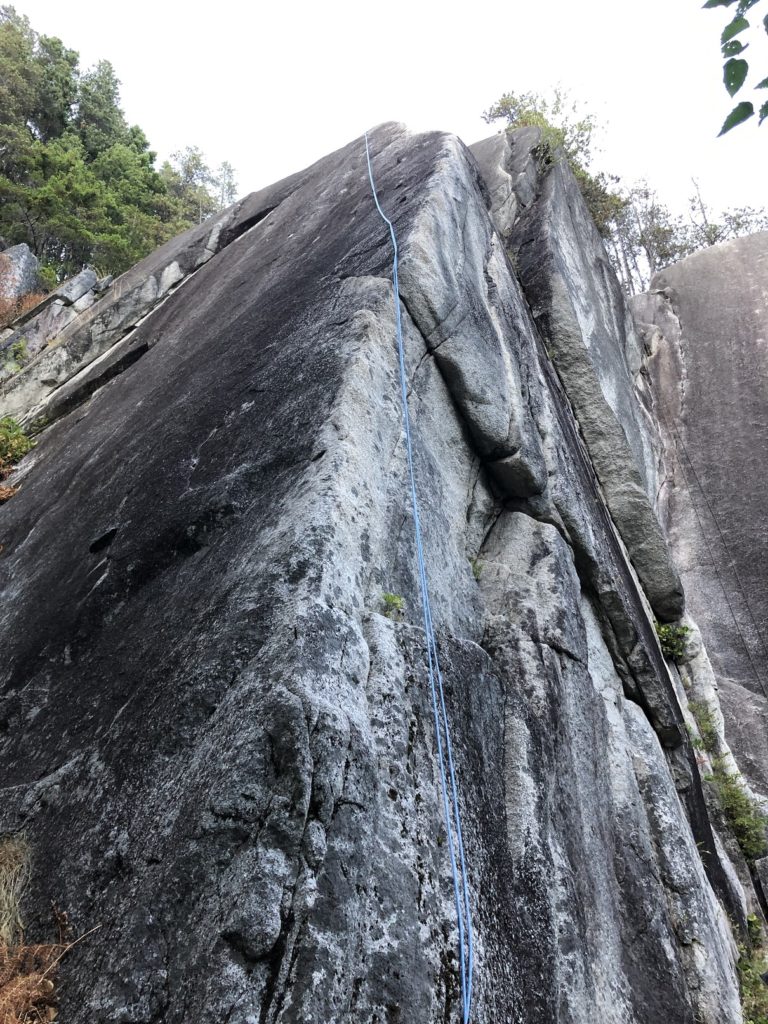
Later in August, I did another 5.10b but didn’t climb any 10a or attempt any 10c, 10d route. As September came around, I realized that I was not only ambitious with my grade goal but also with the number of days I thought I would get to climb. September 25 promised some great weather, but I sprained my ankle and couldn’t get out.
I don’t know if I will get to complete this grade pyramid this season, but I feel like I have a solid base and a good approach to progress in my trad climbing. For the next season, I need to pick some good goals and get comfortable with red pointing. I might also add some rock climbing specific training to my training plan as I get closer to the next climbing season.
Here is a summary of my climbs this year so far –
Total Climbs (pitches): 70+ (90% Trad and rest Sport/Mixed)
Days of Outdoor Climbing (full/half days): 19
Highest Onsight Grade: 5.10b (Trad)
Resources:
Grade Pyramid: Good Spray Climbing | Power Company Climbing
Crack Climbing Technique: YouTube Videos
Glossary of climbing terms
The Crag: My Profile I started using The Crag to log my climbs this season. It does not have some of the alpine climbs, but works great for the most part and helps me keep track of my climbing.
Training: Uphill Athlete Free at home Rock Climbing Plan
Disclosure: I am not compensated for any of the external links shared in this post.
Did you enjoy reading this post? Please subscribe to get weekly updates. Please share your feedback in the comments section below. Thank you!


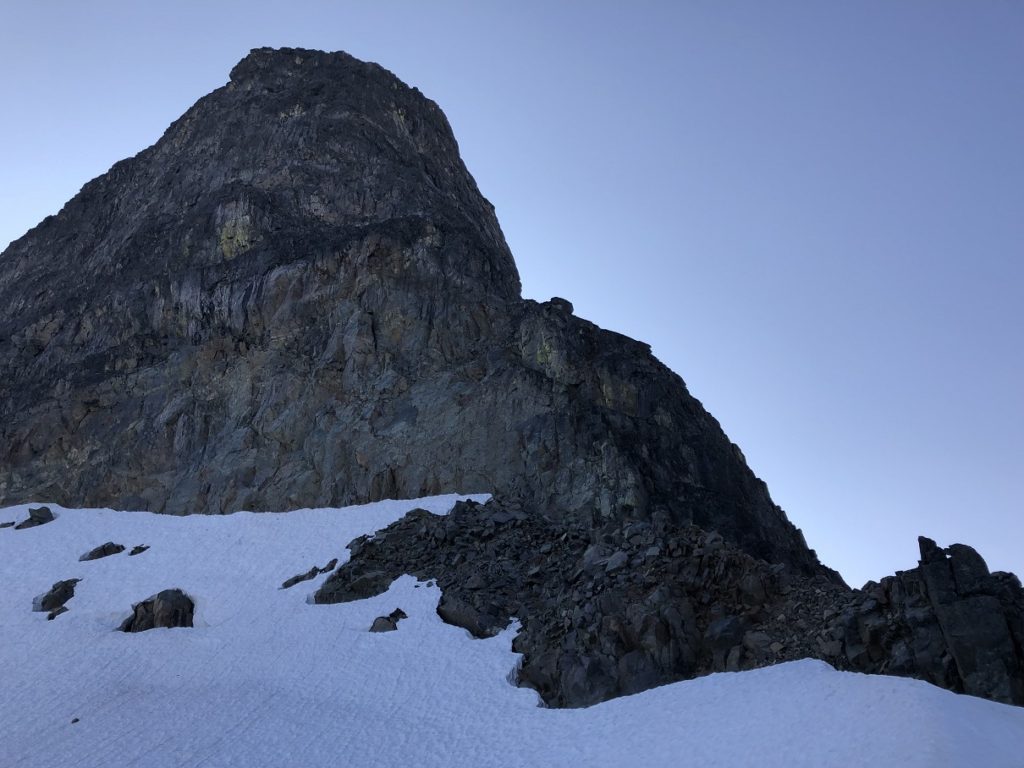
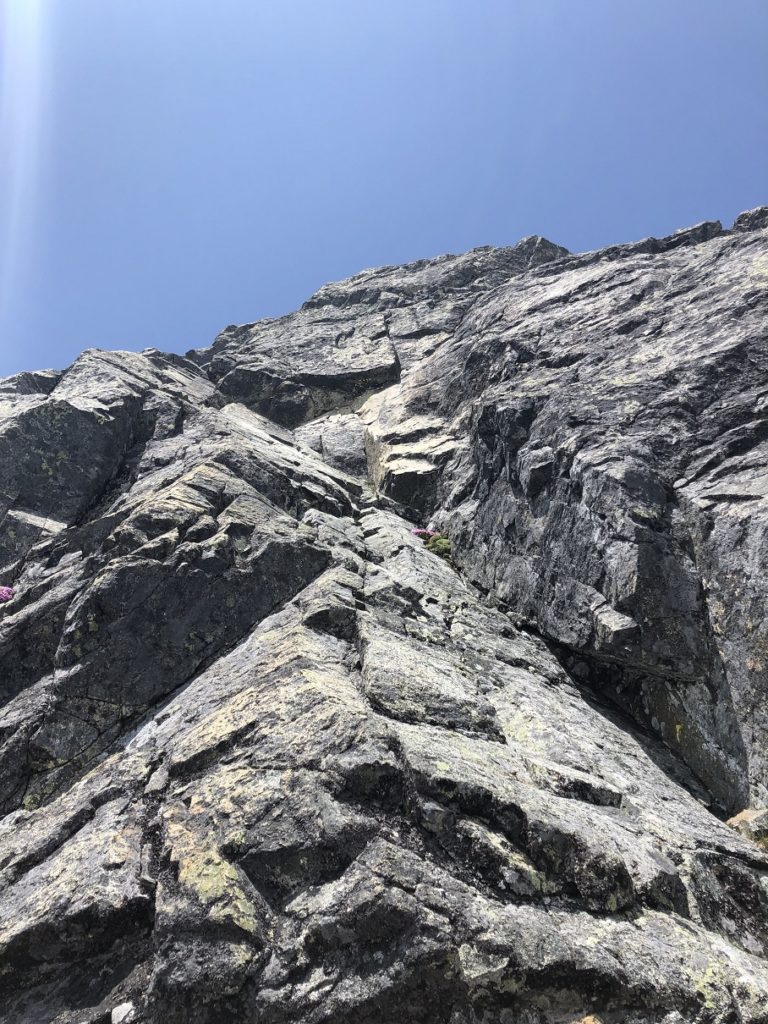
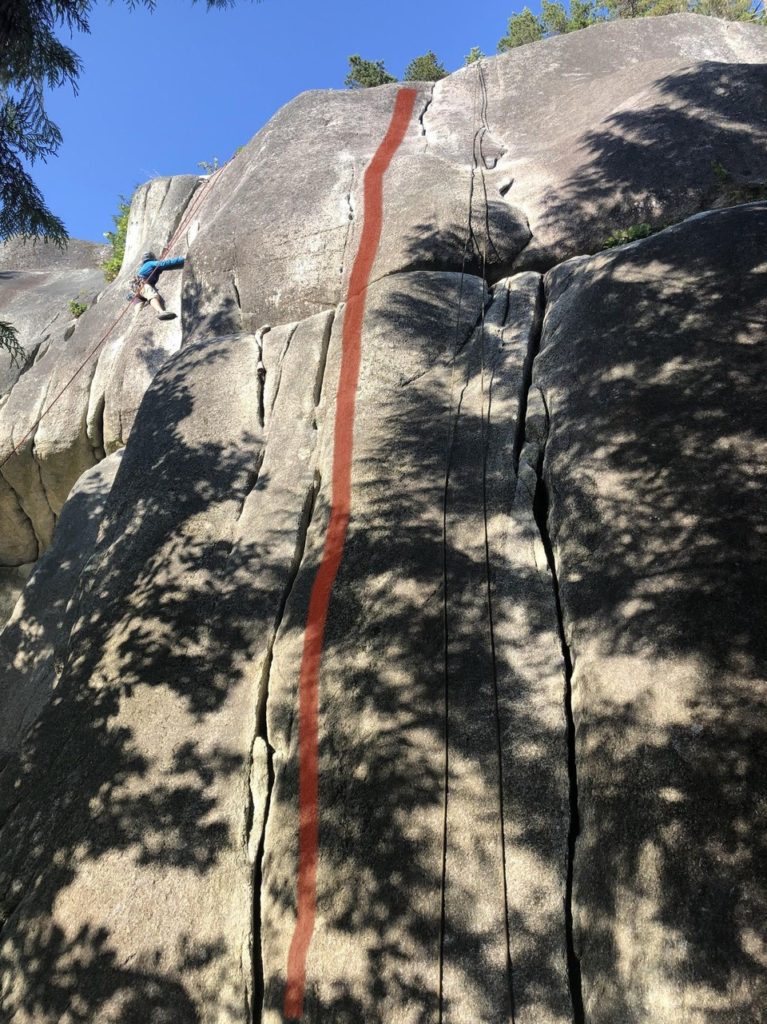
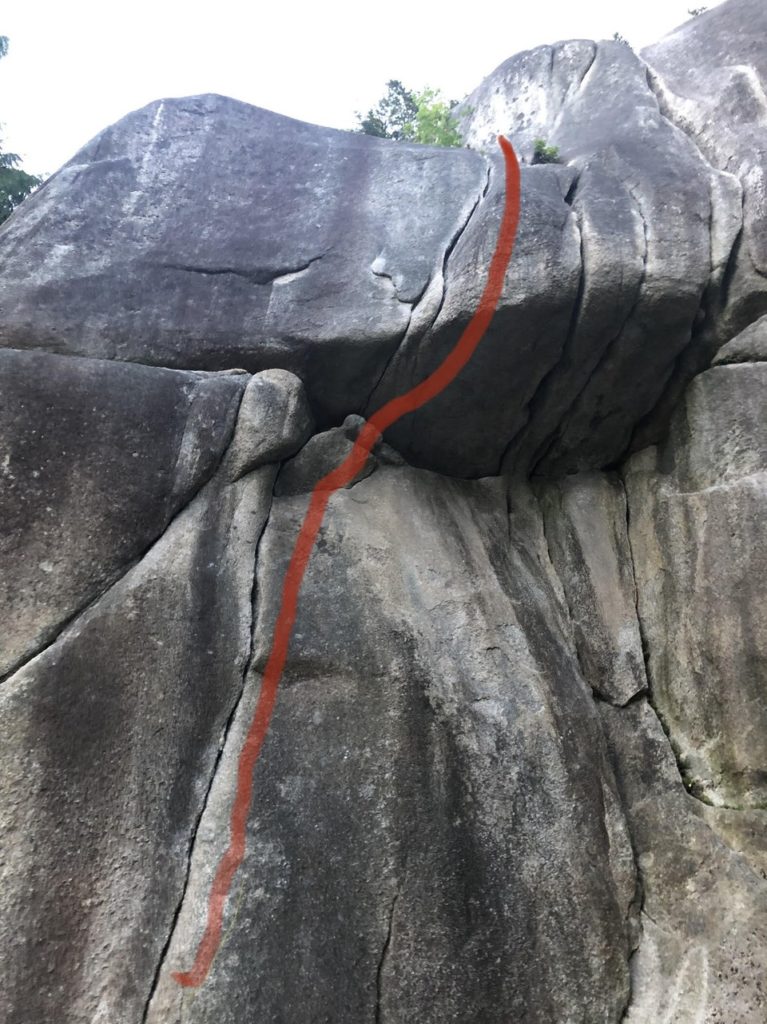
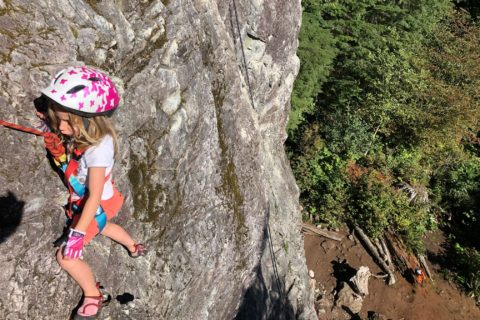

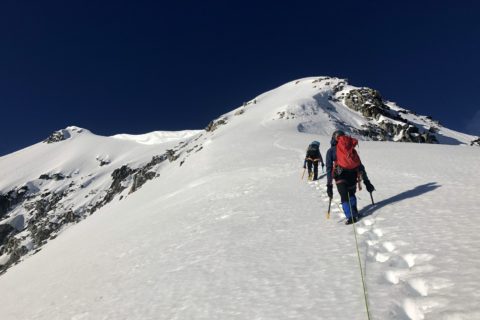
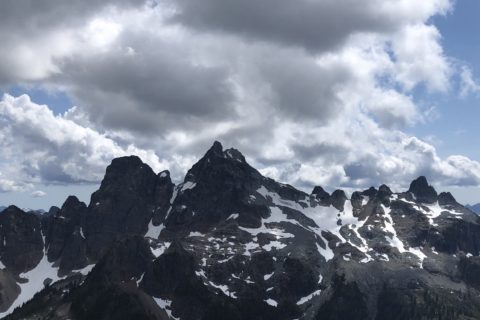
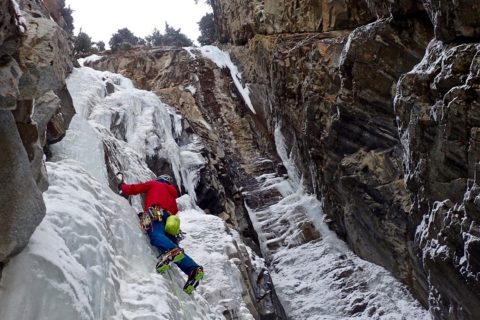
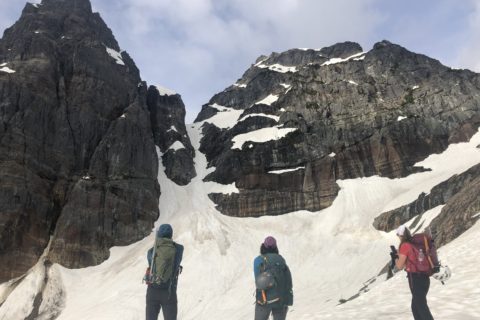
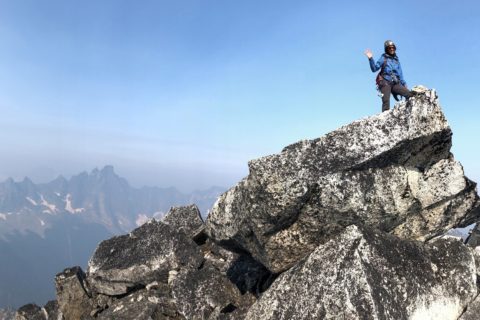
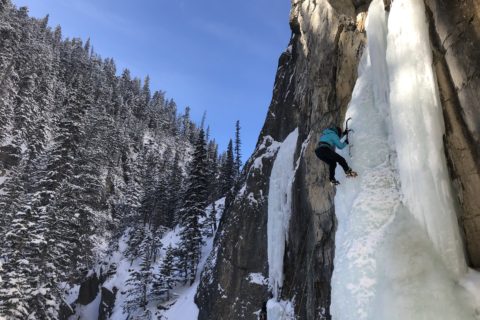
Hi Shashi, I am a recent subscriber to your blogs and have been extremely impressed with your focus and dedication! Your trip reports are very well done, with great photos and all the information presented in a concise and comprehensive manner. I also greatly admire that in spite of having a regular job and a young family you are able to pursue your climbing dreams. I wish you all the very best in the pursuit of your passion. Happy climbing and be safe!
Aloke,
You just made my day. Thanks a ton for the feedback. Sorry, I am still updating this post and will be adding some more content today. Wish you the best!
Hey Shashi, found this blog via uphill athlete/evoke. Your commitment to getting in trad mileage using pyramids is admirable- I am particularly interested as I love trad climbing, but don’t get out much, and feel the same approach would be useful for myself (building up the basics instead of trying 5.9-.10- immediately every time). Unfortunately that pristine Squamish granite is a bit further for me!
One question I have is, do you struggle with the mental side of climbing/trad? Gear fear, fear of falling, etc? I find that with easy enough trad, I am not worried (with good gear), because I don’t expect to fall. But when it gets harder, the pump/fear of falling/fear of getting great gear fast all kind of compound, and it isn’t too fun.
I am guessing the mental stress is lessened when you know you have the mileage base/pyramid of routes under your belt, and so you have practiced all of the necessary components at more manageable levels. But then again, it seems seasonal- even after a great season, I wouldn’t expect to jump back into my high point the next season (but maybe would build up to it faster, and feel better in the core skills?).
Curious to hear your thoughts!
Max – I just saw this and sorry for the delay in response. Thank you for your kind note. I will be posting about my 2024 season update in November and will address some of the challenges – falls, gear, etc. I had this season. Overall I still saw an improvement, but there are some things I could have done better.
As you mentioned, what has helped me on the mental side is the volume of climbs at a certain grade level. So I am not as stressed mentally most of the time. When I am pushing into a harder grade level, one thing I look for is avoiding a ground fall? If I can with some good gear in the initial section of the climb, then I feel good about attempting the climb. Difficult to gauge this every time but it helps. Some climbers would top rope a climb first and project a route, but I haven’t done that yet. This likely slows down my grade progression.
From one season to other, I am still conservative about the grade and ease into the highest grade from last season after a month or even two months of climbing. At least that’s what I did this year.
You might have heard about the book Rock Warrior’s Way or the shorter version Espresso Lessons: From the Rock Warrior’s Way by Arno Ilgner. I found it helpful to develop a good lead head. Wish you the best!